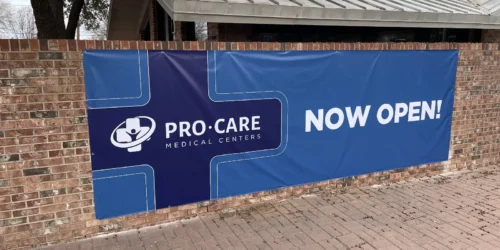Car accidents are a regular occurrence. In 2019, researchers for the National Highway Traffic Safety Administration (NHTSA), an agency for the federal government of the United States which monitors the safety of drivers and their passengers throughout the country, determined that for every fifteen minutes of that year, one person died in a collision-related accident. Meanwhile, for every minute of 2019, around 5 people were injured. The same study estimates that at least 2.7 million people sustained injuries during the nearly 7 million crashes reported by police that year.
With over two hundred million registered drivers in the United States, traffic accidents seem statistically inevitable, especially given the seventy billion hours collectively spent by Americans on the road. From commutes to road trips, from errands to soccer team carpools, Americans are almost always on the go in a car. This is why it is important to know car accident doctors who can be called immediately when an unfortunate accident happens.
It is unknown how many injuries are sustained during car accidents each year since many accidents and injuries alike go unreported. Additionally, for each car accident, doctors must monitor their patients over a period of days as symptoms may take time to appear.
The National Highway Traffic Safety Commission teamed up with medical researchers for another study that attempted to determine the kinds of injuries most frequently sustained during collisions. They found that at least 37% of car accidents result in injuries to the legs. The form these leg injuries take depends on the positioning of your legs, the part of the car that took the most impact, and the severity and nature of the collision itself. Below are the common car accident injuries that affect the legs.
Bruises
Bruises, also known as contusions, are usually visible on the skin and are marked by discoloration of the skin. These are common and are expected physical injuries after a car accident.
Bruises are usually found in places where there was some impact from an object. The discoloration, ranging from blue or dark purple to yellow, is due to your blood pooling underneath the skin resulting from damage to blood vessels. It may show up immediately after the impact, or it could take a few days, especially if you have darker skin.
A more severe version of the bruise is called a hematoma. Hematomas are usually much more painful than their smaller, less severe counterparts. Like bruises, you may notice discoloration of the skin, but you will be more likely to notice tenderness or pain in the area of the hematoma, whereas a bruise may or may not be painful.
These common injuries are a frequent marker of a playful childhood, so you may already be familiar with them. These are usually among the least of the injuries you may incur during a collision, although more significant damage to tissues, signaled by bruising, does have the potential to do lasting damage to your body.
Cuts
Skin is the largest organ of the body, with nearly all of it exposed. For this reason, any exposed skin – and some that is covered by clothing, if a sharp object goes through the fabric, such as glass – is vulnerable to injury during a car accident. Many people who walk away from a collision otherwise unscathed may afterward notice either cuts or abrasions, or both, on their legs and other areas of their body.
Otherwise known as an incision, cuts to the skin are as oft-experienced as bruises, and like bruises, are usually no reason for alarm as long as they are treated properly. Cuts usually bleed a bright red color when they first occur, due to the split in blood vessels beneath the skin. If you notice a cut, use direct pressure to stop bleeding. Once the bleeding stops, use a clean, sterile bandage to wrap the cut. If bleeding does not stop or if you begin to feel dizzy, seek medical attention immediately. This may be a sign of a more serious problem.
Scrapes
Abrasions are also fairly common injuries that most people will experience in their lifetime. You may have also heard them called scrapes. An abrasion occurs when the topmost surface layers of the skin are broken. If you have a scrape, you should use an antiseptic to clean the skin and then rinse with clean water. Cover the wound with a bandage that will not stick to the wound.
Both incisions and abrasions can become infected and thus significantly more dangerous if left untreated or if you do not use clean bandages to cover them.
Crushed or Broken Bones
The bottom half of your body is made up of sixty bones, from hip to toe, including your legs. Within the legs themselves, there are four bones, two in the lower leg and two in the upper leg. This does not include your pelvic bones, patella (kneecap), or any of the bones in the ankles.
Any of the bones in your legs or in the bottom half of your body can be vulnerable to injury during a car accident. Your legs may experience an impact that causes significant damage to these bones and to the tissues around them – your muscles, tendons, and ligaments that allow your bones to continue working. (More about injuries to these tissues below.)
Bones may be fractured or, in some cases, shattered, especially when prolonged pressure causes a crush injury. You may also end up with multiple breaks in the same bone or in multiple bones, all stemming from the same incident. Depending on the kind of fracture you are dealing with, you may not notice it right away, or it may be diagnosed only with an x-ray.
There are different categories of broken bones, depending on the way that the bone fractures.
- Stress fracture: Usually not the kind of break caused by a car accident; results from repetitive overuse
- Non-displaced: Broken or cracked bone that does not separate
- Displaced: Broken or cracked bone where the ends separate, either completely or partially
- Open: Protruding fractured bone breaks skin
- Closed: Fracture is contained within the skin
- Avulsion fracture: Chipped bone caused by the tendon pulling away from the bone
Most fractures heal within 6 weeks, but some bones take longer to heal. One example is the tibia in the lower leg, which could take up to 20 weeks to fully heal.
Soft Tissue Injuries
The soft tissues are those which connect, support, or protect the other organs in the body. This could include muscles, fat, blood vessels, cartilage, tendons, nerves, and ligaments. Depending on the kind of soft tissue damage that occurs, these injuries can be extremely painful and may take a long time to recover.
Most soft tissue injuries require a significant amount of rest in order to recover. One common form of self-care recommended by doctors is the RICE method. RICE stands for rest, ice, compression, and elevation. This form of care is to help with pain and swelling during the first two to three days after your injury.
- Rest the affected area. Avoid bearing weight on the injured leg for 24-48 hours. Trying to be active too quickly can cause recovery to take longer.
- Ice will help reduce pain and swelling. During the first 48 hours, use an ice pack or even something like a pack of frozen peas to ice the affected area for twenty minutes every four hours. Be sure not to ice for too long, as it may cause further damage.
- Compression using a medical bandage can help with swelling. This can be especially important in injuries of joints that need stabilization. However, if you appear to need compression for longer than 48 hours, you may need medical attention and more intensive care.
- Elevation can help reduce swelling. Use pillows and other soft supports to raise your affected leg above heart level. This will allow gravity to move the fluids that cause swelling away from your injury.
Sprains and Strains
While these two injury types are frequently confused, they are different. Sprains involve injuries to tendons and ligaments, while strains affect muscle and other fascia. Both are common injuries that occur during car accidents. Compared to other injuries, sprains and strains are usually minor, but overuse of the affected tissue or muscle after the injury or failing to rest the affected areas properly can cause lifelong recurring pain in these areas.
Both strains and sprains reveal themselves through pain, especially when there is weight on the affected leg. You may also notice swelling, tenderness, difficulty moving the affected part of the body, and weakness that prevents you from doing your everyday activities.
It can be difficult to tell a sprain or strain apart from a fracture, so it is important to see a medical professional to receive a diagnosis. Doctors will usually use x-rays or other imaging to help determine the exact condition of the affected area of your legs.
ACL Injuries
Several thick bands of tissue connect your femur (thigh bone) to your patella (kneecap) and tibia (shin bone). The anterior cruciate ligament, or ACL, is one of the bands of tissue, or ligaments, that is part of this connection.
Sprains and tears are both commonly discovered in the ACL, and both cause significant levels of pain. Between 100,000 and 200,000 cases are diagnosed yearly, especially in athletes, who are particularly vulnerable to ALC injuries. 1 in 35 adults will experience an ACL injury each year. Some research suggests that due to weaker hamstrings and gaits that favor the quadriceps, which thus add extra stress to the ACL when making a sudden stop, women are also especially likely to sustain an ACL injury when compared to men.
The way that an impact during a traffic accident causes your legs to twist suddenly or to hyperextend your knee can lead to a sprain or tear of your ACL. Of all the injuries to the knee that occur during car accidents, ACL sprains and tears are the most common. They are most frequently diagnosed with the use of an imaging tool such as an x-ray.
Most people who experience an injury to the ACL will immediately notice a popping or cracking sound, followed by severe pain in the knee area. You will likely be unable to stand or put weight on the leg that is affected. Within hours, you may notice swelling in the knee and a significantly reduced range of motion.
Depending on the severity of the injury, it can take up to nine months for your ACL to fully recover.
Meniscus Tears
Another common knee injury occurs in the meniscus. This refers to one of the two wedges of cartilage that cushion the place where the femur and tibia meet at the knee. The job of these wedges – known as menisci – is to absorb shock when weight is placed on the leg. Tears to the menisci are common and can be very painful.
Athletes are most often the kinds of patients who are diagnosed with meniscus tears, but people who have been involved in a car accident are also likely to experience tears to either one or both menisci.
When you tear your meniscus, you will notice immediate pain, and it may or may not be accompanied by the sound of a pop or crack. At first, walking will be somewhat possible, but over the next few days after your injury first occurs, your knee will become stiffer, and your range of motion and ability to walk will become more limited. Your knee will also likely swell.
Herniated Discs
The spinal column ends right above the legs, and injuries to the legs can affect the spinal cord. The spinal cord contains 33 discs, which are there to protect the nerves that send messages to your brain. Each of these discs is usually encased in a protective disc called an annulus. Physical trauma, such as during a car accident, can cause the spongy material within the annulus to slip out, resulting in what is called a herniated disc.
While this kind of injury occurs in the back, it can cause serious complications for your legs. If there is a disruption along the spinal cord there could be a problem with the nerves in your legs. This could lead to extreme pain or even paralysis.



